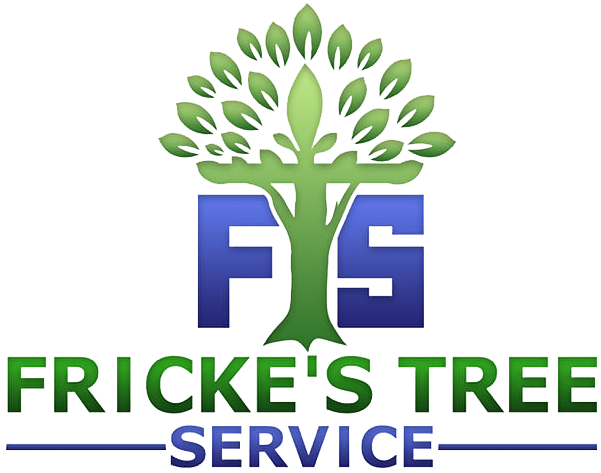Fricke's Tree Service
Is Your Tree a Risk to Your Home? Here’s How to Tell.
Signs Your Tree Might Be a Danger to Your Home (And What to Do)
Understanding Tree Hazards
Trees are a beautiful addition to any landscape, providing shade, beauty, and even increased property value. However, they can also pose significant risks to your home and safety. Understanding the signs that your tree might be a danger is crucial for homeowners. In this post, we will explore the warning signs of hazardous trees and what actions you can take to mitigate risks. Trees, while often seen as a symbol of strength and stability, can sometimes become liabilities if not properly maintained. It is essential to be vigilant and proactive in identifying potential hazards that could threaten your property and loved ones.Common Signs of Tree Danger
Identifying a potentially dangerous tree involves looking for specific signs. Here are some common indicators that you should be aware of:- Dead or Dying Branches: If you notice branches that are dead or dying, it could indicate that the tree is unhealthy. These branches can easily break off and cause injury or damage.
- Cracks or Splits: Large cracks or splits in the trunk or branches can weaken the tree's structure. This structural compromise can lead to catastrophic failure, especially in adverse weather conditions.
- Leaning Trees: A tree that is leaning significantly may be at risk of falling, especially during storms. Leaning can be a sign of root instability or decay.
- Root Damage: Exposed or damaged roots can compromise the stability of the tree. Roots are essential for anchoring the tree and absorbing nutrients and water.
- Fungal Growth: Mushrooms or other fungi growing at the base of the tree can indicate decay. Fungal growth is often a sign of internal rot, which can weaken the tree's integrity.
Assessing the Risk
Once you've identified potential warning signs, it's essential to assess the risk your tree poses to your home. Consider the following factors when evaluating the situation:- Proximity to Structures: Trees that are too close to your home or other structures can cause damage if they fall. Assess the distance between the tree and your house, garage, or other valuable structures.
- Tree Species: Some species are more prone to failure than others. Research the types of trees in your yard to understand their specific vulnerabilities and growth patterns.
- Weather Conditions: Heavy winds, rain, or snow can exacerbate existing issues with trees. Be particularly cautious during stormy weather, as this is when trees are most likely to fail.
What to Do If You Suspect a Dangerous Tree
If you suspect that a tree on your property may be dangerous, take the following steps to ensure safety and address the issue:1. Conduct a Visual Inspection
Start with a thorough visual inspection of the tree. Look for the signs mentioned earlier and take note of any abnormalities. Pay attention to the overall health of the tree, including its leaves and bark.2. Consult an Arborist
For a professional assessment, consider hiring a certified arborist. They can provide expert advice on the health of your tree and recommend necessary actions. An arborist can also help you understand the best practices for tree care and maintenance.3. Prune or Remove Hazardous Branches
If the tree is salvageable, pruning dead or dangerous branches can help reduce risk. Always hire a professional for this task to ensure safety. Proper pruning techniques can promote healthy growth and minimize hazards.4. Consider Tree Removal
If the tree poses a significant risk, removal may be the best option. This is especially true for trees that are dead, dying, or structurally compromised. Tree removal should be performed by professionals to ensure it is done safely and effectively.Preventative Measures
Taking proactive steps can help prevent tree-related hazards in the future. Here are some preventative measures to consider for maintaining the health and safety of your trees:- Regular Inspections: Schedule regular inspections of your trees, especially after severe weather. This will help you catch any potential issues early on.
- Proper Pruning: Ensure that trees are pruned correctly to promote healthy growth and reduce risks. Regular pruning can help maintain the tree's shape and remove any dead or weak branches.
- Planting Wisely: When planting new trees, consider their mature size and proximity to structures. Choosing the right location can prevent future hazards as the tree grows.
Conclusion
Being aware of the signs that your tree might be a danger to your home is essential for maintaining safety and protecting your property. Regular inspections and professional assessments can help you manage tree health effectively. If you suspect a tree is hazardous, don’t hesitate to reach out for professional help. Taking these precautions can save you from costly damages and ensure the safety of your family and home. For more information or to request an estimate, please visit Frick's Tree Service. Their team of experts can assist you in evaluating your trees and providing the necessary services to keep your property safe.SHARE POST
RECENT POSTS
Interested in Our Services?
Get in touch today to discuss your next project and we will happy to answer any questions and provide you with a no-obligation FREE Estimate.







